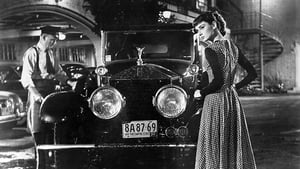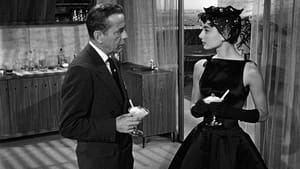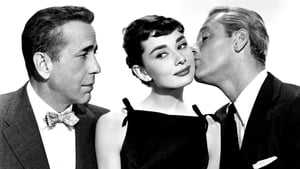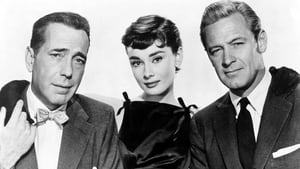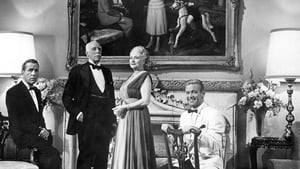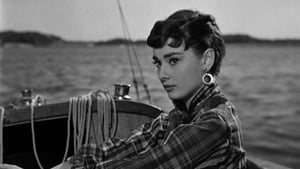Video Sources 0 Views
- Watch trailer
- Sabrina 1954 Colorized

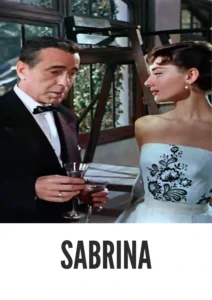
Synopsis
Table of Contents
Toggle
Step into the captivating world of Sabrina, a delightful romantic comedy from 1954, now exquisitely colorized to enhance its timeless appeal. Starring Humphrey Bogart and Audrey Hepburn, this film tells the enchanting story of a young woman’s transformation and the two brothers who vie for her affection. Perfect for fans of classic cinema and those who appreciate heartwarming tales of love and self-discovery, this HD download offers a fresh perspective on a beloved cinematic gem.
Sabrina follows the journey of Sabrina Fairchild (Audrey Hepburn), the daughter of the wealthy Larrabee family’s chauffeur. Often overlooked and unappreciated, Sabrina harbors a secret crush on David Larrabee (William Holden), the charming but irresponsible younger brother. Yearning for a different life, Sabrina attends culinary school in Paris, where she blossoms into a sophisticated and confident woman.
Upon her return, Sabrina’s transformation captivates both David and his elder brother, Linus Larrabee (Humphrey Bogart), a serious and work-oriented businessman. As David pursues Sabrina, Linus initially intervenes to protect the family’s interests, but soon finds himself falling under her spell. A complex love triangle ensues, filled with humor, romance, and heartfelt moments, as Sabrina must choose between the two brothers and forge her own path. Sabrina is a charming and witty exploration of love, class, and personal growth, set against the backdrop of a glamorous Long Island estate and the romantic allure of Paris.
The film features a stellar cast of actors who bring this enchanting story to life:
-
Humphrey Bogart as Linus Larrabee
-
Audrey Hepburn as Sabrina Fairchild
-
William Holden as David Larrabee
-
John Williams as Thomas Fairchild
-
Martha Hyer as Elizabeth Tyson
Sabrina gracefully blends the genres of romantic comedy and classic drama, offering a heartwarming and humorous exploration of love, class, and personal transformation. Its witty dialogue, charming characters, and picturesque settings make it a beloved classic that continues to resonate with audiences today.
Released in 1954, Sabrina reflects the post-war fascination with romance and the aspirational lifestyle of the wealthy. The film captures the essence of Hollywood glamour, with its elegant costumes, luxurious settings, and charismatic stars. Sabrina also explores themes of social class and the changing roles of women, making it a relevant and thought-provoking film for its time. Directed by the legendary Billy Wilder, Sabrina is a testament to his skill in crafting sophisticated and entertaining films that appeal to a wide audience.
This colorized version of Sabrina has been meticulously restored using advanced digital techniques, enhancing the visual experience while preserving the film’s original charm and elegance. The colorization process involved carefully analyzing the grayscale tones of the original black and white footage and assigning appropriate colors to each scene, ensuring that the colors reflect the mood and atmosphere of the story. This painstaking process brings new life to the characters and settings, making the film even more captivating for modern audiences. While debates about colorizing classic films persist, it undeniably introduces these films to a new generation of viewers, ensuring their enduring legacy.
-
: Billy Wilder
-
: Billy Wilder, Samuel A. Taylor, Ernest Lehman
-
: the play “Sabrina Fair” by Samuel A. Taylor
-
: Charles Lang
-
: Arthur P. Schmidt
-
: Paramount Pictures
-
: Paramount Pictures
-
: 113 minutes
-
: MP4
-
: HD (1080p)
-
: Compatible with most devices, including smartphones, tablets, computers, and smart TVs.
Sabrina (1954) is widely regarded as a classic of the romantic comedy genre, praised for its witty script, charming performances, and elegant direction. The film was a critical and commercial success upon its release, earning several Academy Award nominations and solidifying Audrey Hepburn’s status as a major Hollywood star. Sabrina continues to be celebrated for its timeless appeal and its exploration of themes that remain relevant to audiences today.
-
: What is Sabrina about?
-
A: Sabrina is a romantic comedy about a chauffeur’s daughter who returns from Paris and finds herself caught in a love triangle with two wealthy brothers.
-
-
: Is Sabrina (1954) a well-known film?
-
A: Yes, Sabrina is a highly regarded classic of the romantic comedy genre, known for its stellar cast and charming story.
-
-
: Is this version of Sabrina colorized?
-
A: Yes, this version has been professionally colorized to enhance the viewing experience.
-
-
: What makes Sabrina a classic film?
-
A: Sabrina is a classic film due to its witty script, memorable performances, and its exploration of universal themes such as love, class, and personal transformation.
-
-
: What is the download format?
-
A: The download format is MP4, which is compatible with most devices.
-
-
: What resolution is the download?
-
A: The resolution is HD (1080p), providing a high-quality viewing experience.
-
Watch Sabrina Today!
